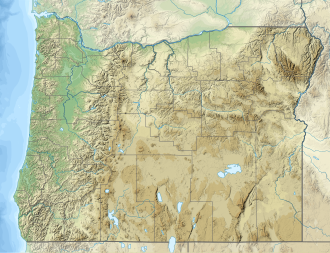This article relies largely or entirely on a single source .(May 2021) |
| Jackies Butte | |
|---|---|
| Highest point | |
| Elevation | 4,652 ft (1,418 m) |
| Prominence | 397 ft (121 m) |
| Coordinates | 42°36′21″N117°35′20″W / 42.60583°N 117.58889°W |
| Geography | |
| Location | Oregon, United States |
| Geology | |
| Rock age | Less than 10,000 years ago? |
| Mountain type | Volcanic field |
| Last eruption | Less than 10,000 years ago, Holocene |
Jackies Butte (also known as Bowden Crater) is a basaltic volcanic field located in southeastern Oregon.
